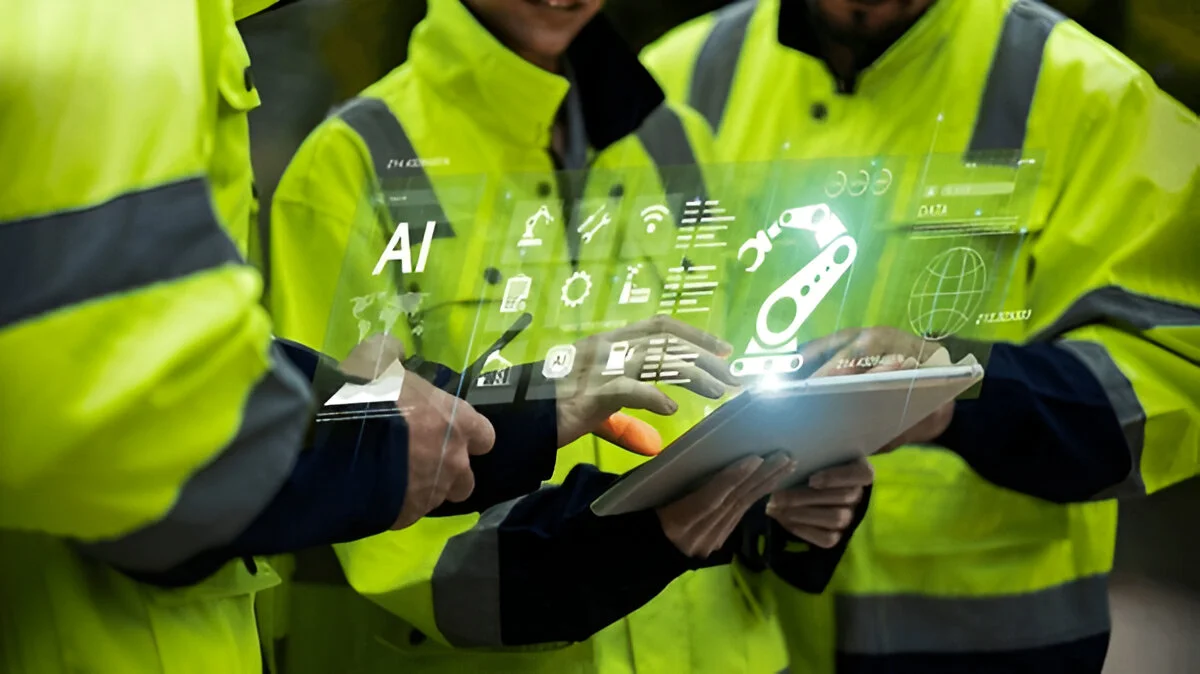
Workplace safety trends for 2025 are reshaping how businesses approach health and safety as technology and employee expectations continue to evolve, so too do the expectations around health and safety. Businesses are now expected not only to meet compliance standards but also to anticipate risks, create proactive safety cultures, and adopt smarter tools that protect their employees.
In 2025, workplace safety isn’t just about clipboards and checklists; it’s about using data, automation, and artificial intelligence (AI) to create safer, more efficient environments.
Here are the key health and safety trends in the workplace to watch this year and why AI is at the heart of them.
1. Real-Time Safety Monitoring Goes Mainstream
Organisations are moving away from manual safety checks and adopting real-time monitoring technologies. AI-powered cameras and sensors now enable companies to:
- Detect unsafe behaviours as they happen
- Monitor PPE compliance
- Alert supervisors to restricted zone breaches
- Track worker movement in high-risk areas
This shift toward live safety oversight reduces lag time between an incident occurring and action being taken saving both time and lives.
2. Behaviour-Based Safety Powered by AI
Behaviour-based safety programmes have been around for years, but AI is taking them to the next level. Through machine learning, organisations can now:
- Analyse trends in employee actions
- Identify repetitive unsafe behaviours
- Deliver targeted training based on risk patterns
- Create dashboards showing safety performance by team or location
This not only improves safety outcomes but also helps build a stronger, more accountable safety culture.
3. Data-Driven Decision Making
Safety teams are increasingly relying on data to inform their strategies. Instead of reactive approaches, businesses are using predictive analytics to:
- Forecast potential accident hotspots
- Review past incidents to prevent recurrence
- Justify safety investments to senior leadership
- Benchmark performance across multiple sites
Access to rich, real-time safety data is allowing managers to move from guesswork to insight and act more decisively.
4. PPE Detection and Smart Compliance
AI-driven PPE detection tools are now helping organizations ensure that workers are always protected, without constant manual supervision. These systems can automatically
- Identify whether hard hats, gloves, or vests are being worn
- Flag non-compliance in real-time
- Maintain records for safety audits
- Integrate with access control systems to restrict entry until PPE is detected
This improves consistency, reduces administrative load, and enhances accountability.
5. Flexible, Scalable Safety Platforms
Modern workplace safety solutions aren’t static tools. Today’s platforms are cloud-based, modular, and designed to grow with your business. This means organizations can:
- Add new sites or zones as needed
- Set custom alerts and rules
- Access safety data remotely
- Tailor reports to specific compliance needs or insurance requirements
Whether you’re managing one location or twenty, these tools ensure safety standards remain consistent.
6. Emphasis on Mental Health and Ergonomics
In 2025, workplace safety isn’t limited to physical hazards. More businesses are recognizing the importance of:
- Mental health risk assessments
- Monitoring screen time and break patterns
- Supporting remote and hybrid teams
- Tracking ergonomic risks with AI-based posture and workstation analysis
This shift reflects a broader commitment to employee well-being and holistic safety strategies.
In fact, many companies are now integrating wellness initiatives with leadership training to empower unmotivated employees and address the mental side of workplace safety.
Explore the Full Report on Workplace Safety Trends
For a more in-depth look at these innovations, read Protex AI’s report on health and safety trends in the workplace. It explores how businesses across logistics, manufacturing, retail, and other sectors are using AI to reduce risk and improve performance.
The report highlights:
- Emerging technologies driving safety innovation
- Case studies from leading organisations
- Tools for building a proactive safety culture
- Predictions for where workplace safety is headed next
Workplace safety is no longer a box-ticking exercise, it’s a strategic priority. In 2025, forward-thinking companies are using AI not just to meet safety standards, but to exceed them.
By staying ahead of the latest trends and embracing digital transformation, businesses can create safer environments, improve operational resilience, and show their people they genuinely care.
7. AI-Driven Training Simulations
One of the emerging trends in 2025 is the rise of AI-powered safety simulations and VR-based training environments. Companies are using immersive, interactive tools to prepare employees for real-world hazards in a risk-free setting. AI adapts scenarios based on an employee’s skill level and previous performance.
This type of intelligent training helps:
- Improve the retention of safety procedures
- Exposing workers to rare but dangerous situations
- Personalize learning experiences for different departments
It’s especially useful in industries like oil & gas, aviation, and manufacturing, where mistakes can be fatal and real-world training is limited.
Explore the Full Report on Workplace Safety Trends for 2025
For a more in-depth look at these innovations, read Protex AI’s report on health and safety trends in the workplace. It explores how businesses across logistics, manufacturing, retail, and other sectors are using AI to reduce risk and improve performance.
The report highlights:
- Emerging technologies driving safety innovation
- Case studies from leading organisations
- Tools for building a proactive safety culture
- Predictions for where workplace safety is headed next
Final Thoughts
Workplace Safety Trends for 2025 reflect a shift in how companies view employee protection and embracing these trends early creates a lasting advantage.
By staying ahead of the latest innovations and embracing digital transformation, businesses can create safer environments, improve operational resilience, and show their people they genuinely care.
The organisations that invest in smart safety technologies today will be tomorrow’s leaders in both productivity and employee retention.
Forward-thinking companies that prioritize workplace safety and culture are also less likely to struggle with why good employees leave — a key issue for retention and morale in 2025.



GIPHY App Key not set. Please check settings